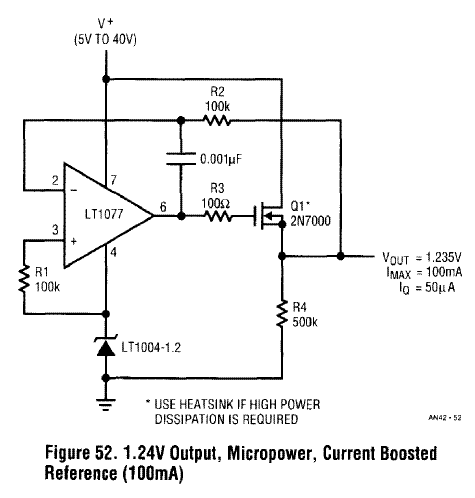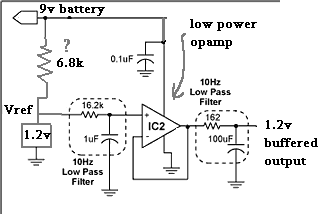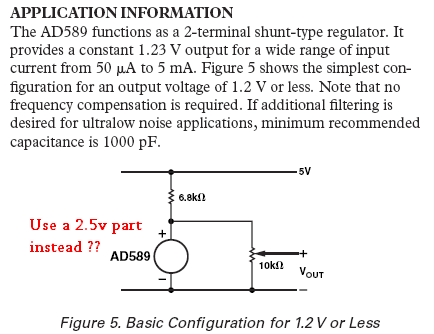Sometimes I need to revisit the basics because I've missed something.
How do you adjust the null trimpot of an opamp that's already "in-circuit" ...in other words, that has active components before it, and after it ?
I suspect you disconnect any signal to the opamp's input, and measure the null directly at it's output pin while adjusting the trimpot (but leaving resistors Rf and Rin in play).
(??)
This particular circuit is a single supply. I've put a 20k offset trim per the datasheet of the (substituted) OP77. The offset shouldn't be much, but I trying to get extra precision.
Powered by a 9v battery.

I've tried removing the FET (and added a jumper to complete the feedback loop),
Removing the 500k,
Leaving the Vref device out,
R1 open, then tried R1 to ground.
No changes....I cannot get 0v at the output.
But I still get around 0.4v - 0.6v at the output on my 7-place DMM.
=FB=
How do you adjust the null trimpot of an opamp that's already "in-circuit" ...in other words, that has active components before it, and after it ?
I suspect you disconnect any signal to the opamp's input, and measure the null directly at it's output pin while adjusting the trimpot (but leaving resistors Rf and Rin in play).
(??)
This particular circuit is a single supply. I've put a 20k offset trim per the datasheet of the (substituted) OP77. The offset shouldn't be much, but I trying to get extra precision.
Powered by a 9v battery.

I've tried removing the FET (and added a jumper to complete the feedback loop),
Removing the 500k,
Leaving the Vref device out,
R1 open, then tried R1 to ground.
No changes....I cannot get 0v at the output.
But I still get around 0.4v - 0.6v at the output on my 7-place DMM.
=FB=



































